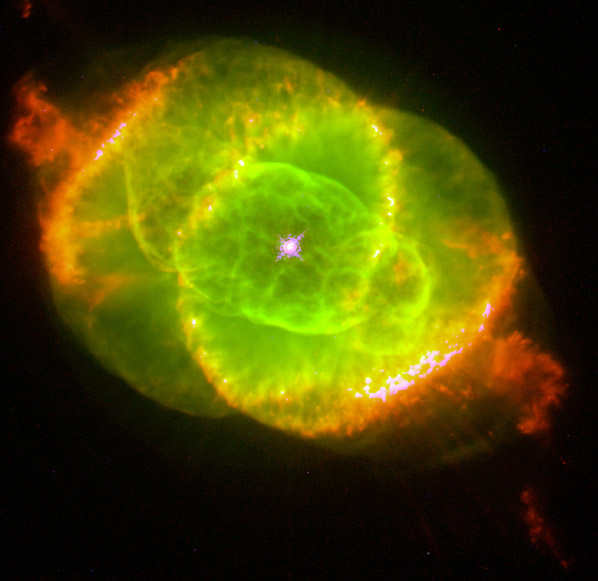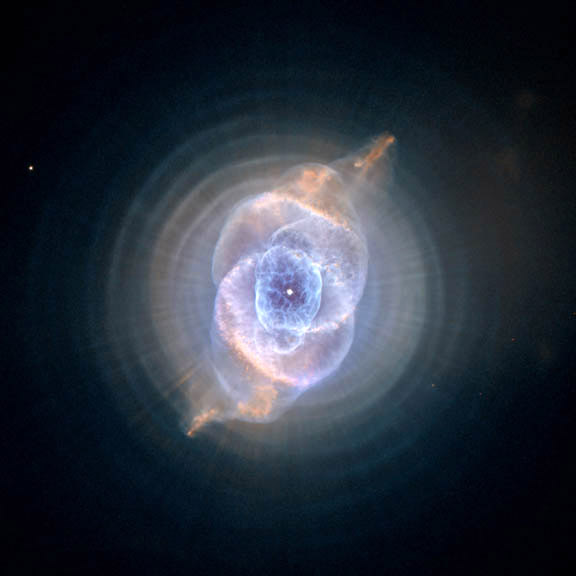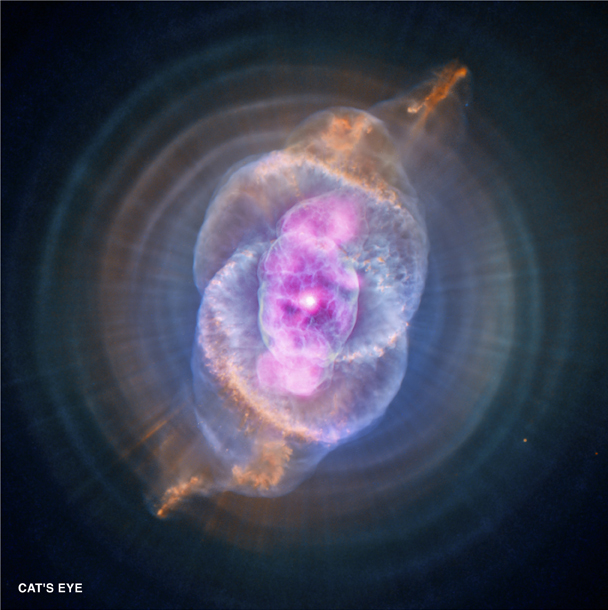Catseye Nebula

This image of the planetary nebula NGC 6543 was captured by the Hubble Space Telescope. It is one of the most complex planetary nebulae ever seen. The Hubble image reveals "surprisingly intricate structures including concentric gas shells, jets of high-speed gas and unusual shock-induced knots of gas. Estimated to be 1,000 years old, the nebula is a visual "fossil record" of the dynamics and late evolution of a dying star. A preliminary interpretation suggests that the star might be a double-star system. The suspected companion star also might be responsible for a pair of high-speed jets of gas that lie at right angles to this equatorial ring. If the companion were pulling in material from a neighboring star, jets escaping along the companion's rotation axis could be produced. These jets would explain several puzzling features along the periphery of the gas lobes. Like a stream of water hitting a sand pile, the jets compress gas ahead of them, creating the "curlicue" features and bright arcs near the outer edge of the lobes. The twin jets are now pointing in different directions than these features. This suggests the jets are wobbling, or precessing, and turning on and off episodically.

Photo credit: NASA J.P.Harrington and K.J.Borkowski University of Maryland.

Adding drama to the Cats Eye, this view superimposes the X-ray image of the nebula upon the visual image above. The X-ray image, shown in purple, was taken by the Chandra X-ray Observatory.
| Nebula |
Galaxy concepts
Solar System Concepts
| HyperPhysics********** Astrophysics | R Nave |